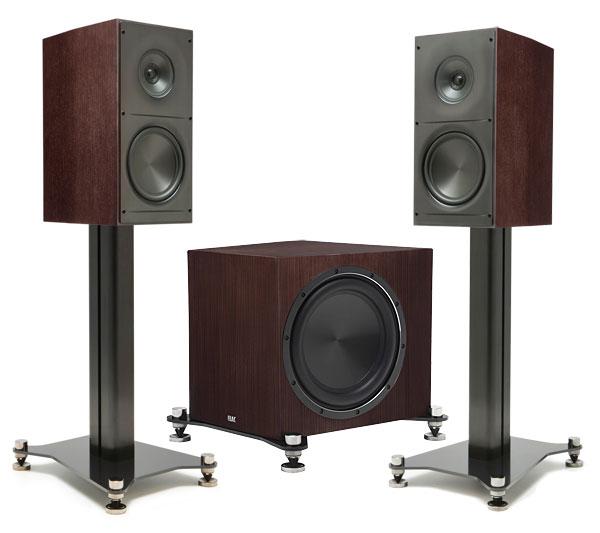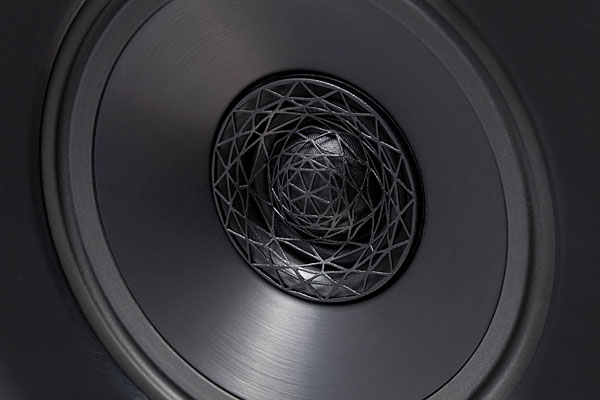Is it worth upgrading from Uni-fi to these?
ELAC Adante AS-61 Loudspeaker Review

AT A GLANCE
Plus
Detailed, clean highs
Superb vocal reproduction
Bloat-free bass
Minus
Relatively low sensitivity
Limited bass extension
THE VERDICT
Elac's step-up AS-61 standmounter gets most everything right. Combined with the company's well-matched SUB3070 subwoofer, it makes for a highly appealing, high-performance speaker package.
Germany-based ELAC was well known in the 1960s and 1970s for its automatic (Miracord) turntables. The company disappeared from North America in the ensuing decades while transitioning into a major European loudspeaker brand. A few years ago, it decided that the time was right to return to the U.S. market. To produce new designs for that move they lured veteran speaker designer Andrew Jones away from his extended gig at TAD/Pioneer. The ELAC Debut line (now in its second generation) came first and seriously shook up the budget speaker sector. That was followed not long after by the pricier, but hardly pricey, Uni-Fi series.
It was inevitable that ELAC would climb higher up the price ladder, and the first result of that is the new Adante range. But the climb was only a few rungs. While the Adantes will be considered expensive by K-Mart shoppers, in the audiophile world their prices are highly competitive.
 The AS-61 standmount model is the least expensive speaker in the Adante range. Its featured attraction is a coincident midrange/tweeter. Andrew Jones has used this type of driver in all but the least expensive of his designs, including his pre-ELAC work at KEF, Pioneer, and TAD. In a coincident driver, the tweeter is located at the apex of the midrange cone, which restricts dispersion at the low end of its range to better match the limited top-end dispersion of the driver covering the midrange. In the AS-61, the tweeter is a soft dome (protected by a web-like grille), but the other drivers use aluminum cones.
The AS-61 standmount model is the least expensive speaker in the Adante range. Its featured attraction is a coincident midrange/tweeter. Andrew Jones has used this type of driver in all but the least expensive of his designs, including his pre-ELAC work at KEF, Pioneer, and TAD. In a coincident driver, the tweeter is located at the apex of the midrange cone, which restricts dispersion at the low end of its range to better match the limited top-end dispersion of the driver covering the midrange. In the AS-61, the tweeter is a soft dome (protected by a web-like grille), but the other drivers use aluminum cones.
The AS-61 combines this coincident midrange/tweeter with a larger woofer. But the “woofer” you see from the outside is actually a passive radiator. The active woofer is a 6.5-inch design mounted in a sealed box located entirely inside the cabinet. This driver fires into a second chamber toward the back of that 8-inch passive radiator, which in turn passes the bass to the outside.

A passive radiator actually acts like a port, but without port noise or resonances. The woofer configuration used here also acts as a mechanical lowpass filter, passively rolling off the top end of the woofer’s response above 200 Hz. Although a 200-Hz crossover can be useful, it’s rarely seen in three-way designs since the low-pass leg typically requires a large, heavy, and expensive inductor. The AS-61’s midrange/tweeter crossover point is 2,000 Hz.
The AS-61 is available in gloss black, gloss white, or matte rosewood finishes. It’s solid and well-braced, and fitted with two sets of excellent-quality, biwire-able binding posts. I used single wiring for this review. You’ll also likely need ELAC’s matching ASBT-101 stands, which the company makes available as a $600/pair option.

Setup
I initially set up the AS-61s about 44 inches from the closest wall behind them (measured from the center of the front baffle), roughly 9 feet apart, and 11 feet from my listening position. The system driving the speakers consisted of a Marantz AV8802A pre-pro (with its room EQ, tone controls, and other internal processing bypassed), a 5-channel Proceed Amp 5, and a Marantz UD7007 universal disc player. The cables used were Kimber AGDL (digital link from player to pre-pro), vintage Cardas Hexlink (pre-pro to power amp), and AudioQuest Rocket 88 (speaker). All music sources were from CD. The Adantes come with easily removable grilles secured by magnets, but I left them off for all of my tests and listening.
Listening
The AS-61s’ sound impressed me immediately. With good source material their top end was neutral—neither rounded off nor overcooked. Sibilants were clearly defined but unexaggerated (or at least as natural as close-miked vocalists can be). Lightly brushed cymbals, delicate finger sounds on guitars, the sheen of stringed instruments, and a singer’s preparatory breath intake at the beginning of a vocal track were all beautifully captured. The imaging was solid, and the sense of depth (when present in the recording) was satisfying.
The Adantes excelled on voices, both male and female, pop, and classical. Leo Kottke’s album My Father’s Face has long been one of my favorite reference discs for how clearly it shows off Kottke’s crisp guitar playing and distinctive voice. The latter isn’t his strong suit, but I’d be surprised to ever hear it sound better than it did on the AS-61s. The balance there, and with other vocalists including Nils Lofgren, Holly Cole, The King’s Singers, Sinne Eeg (if you like great jazz vocals, check out this Danish star’s recordings), Jose Carreras, and Leontyne Price, was superb.
- Log in or register to post comments
































































